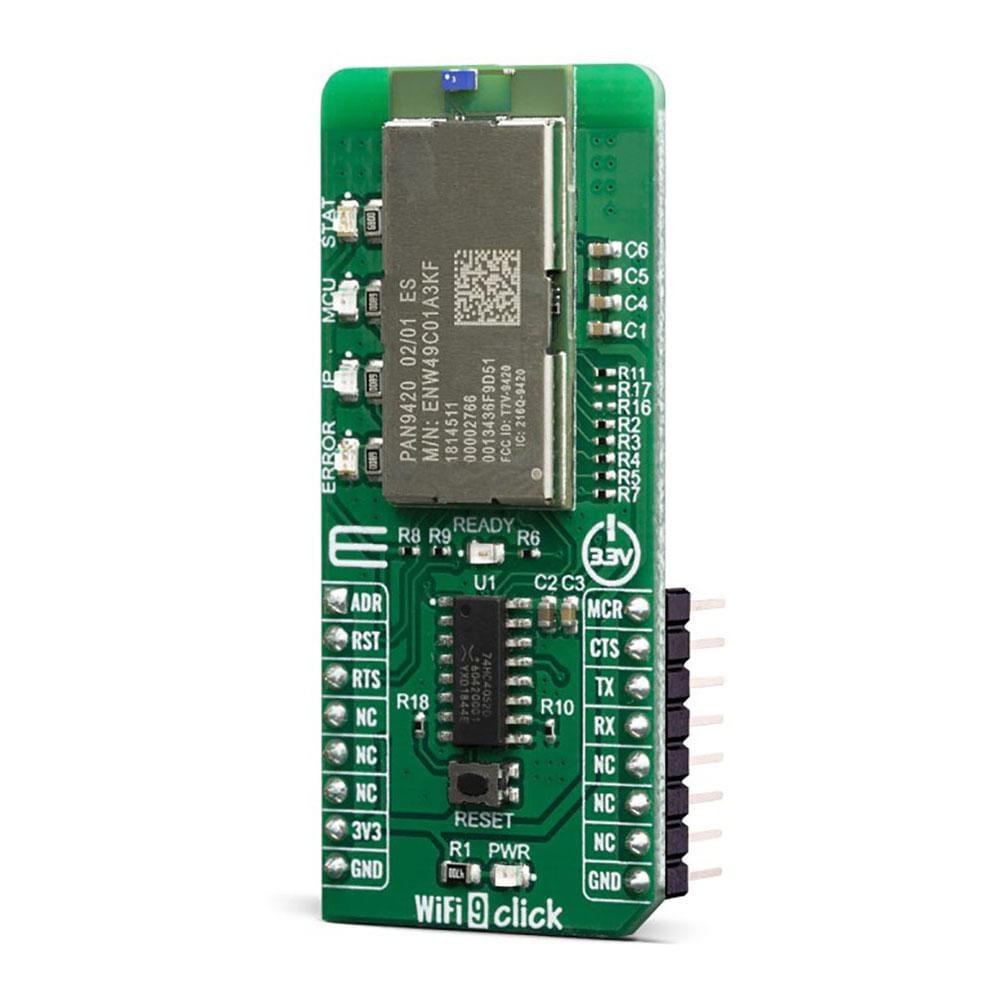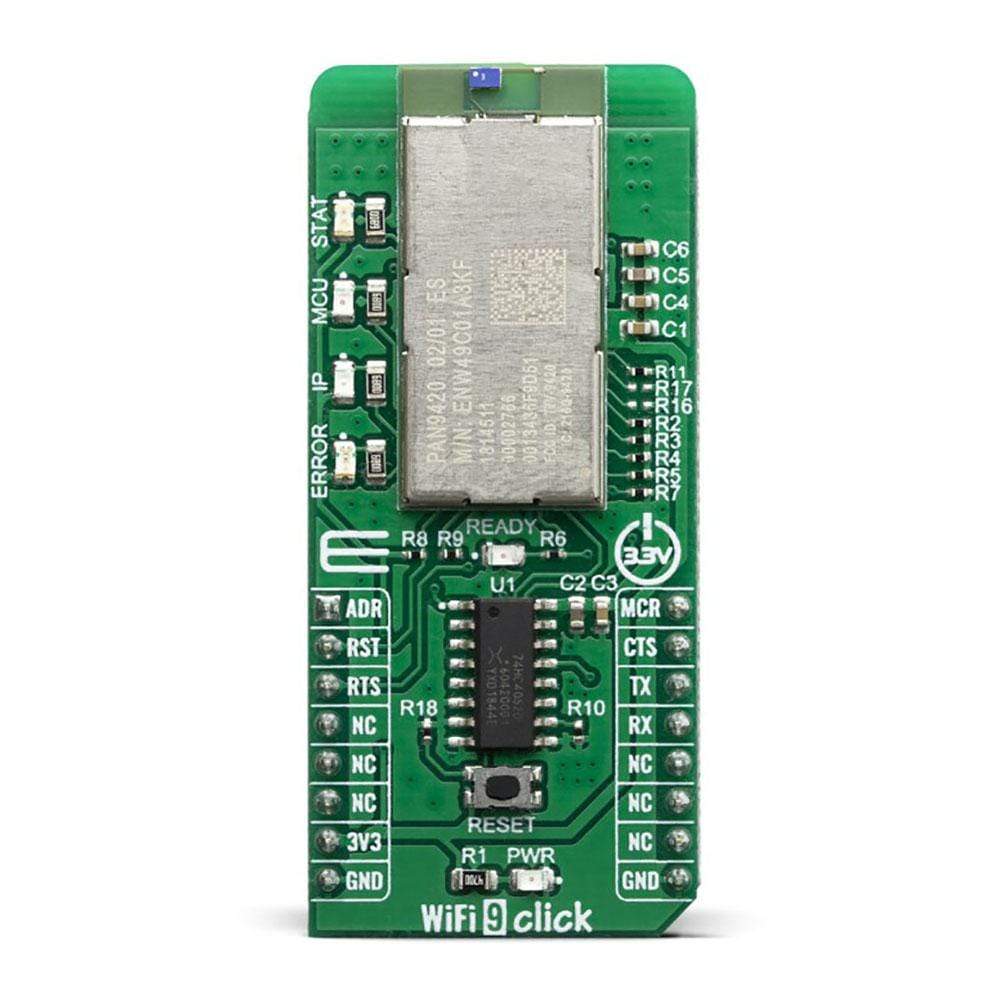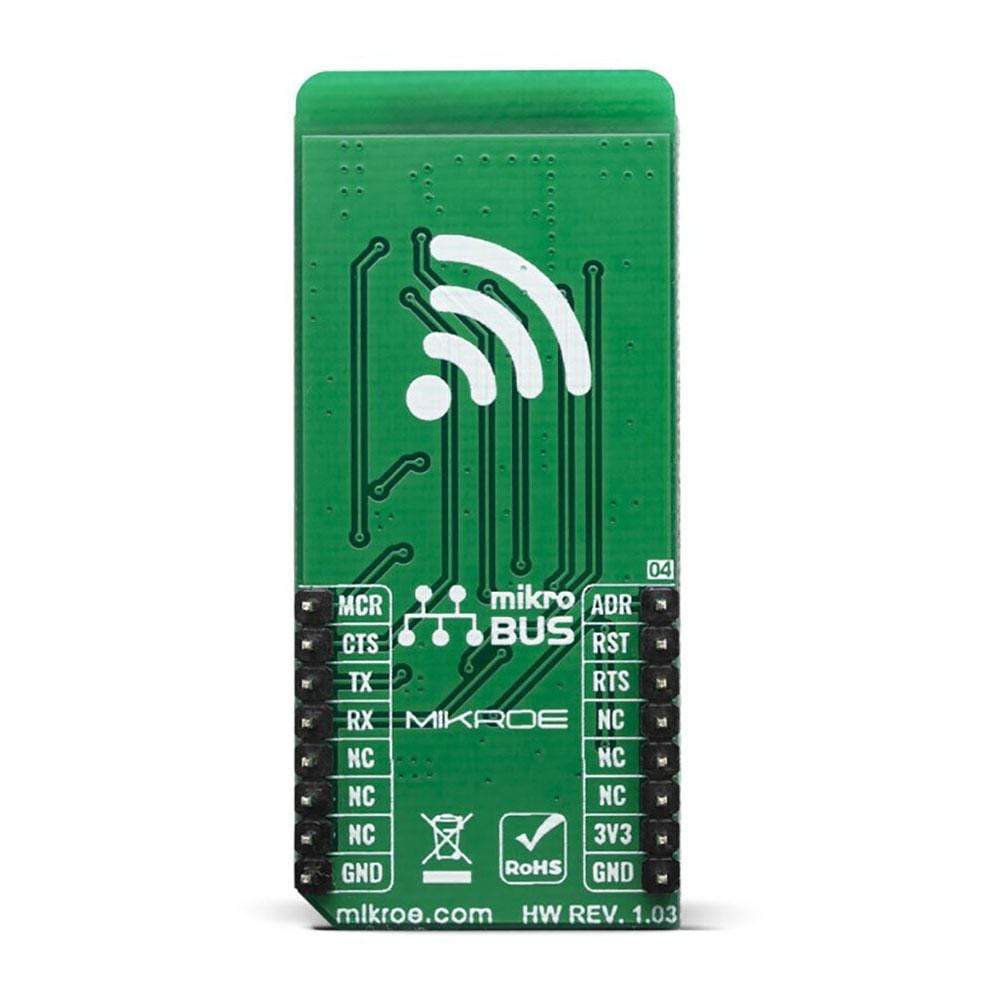


Overview
The WiFi 9 Click Board™ is a fully embedded stand-alone Wi-Fi module, equipped with the PAN9420 a 2.4 GHz ISM band WiFi-embedded module which includes a wireless radio and an MCU for easy integration of WiFi connectivity into various electronic devices. This module combines a high-performance CPU with Wireless radio and integrated memory, which offers many features like webpage storing of HTML or image data, the possibility to work in the access point or infrastructure mode, and dual UART interface for communication with the host controllers.
Downloads
Das WiFi 9 Click Board™ ist ein vollständig eingebettetes eigenständiges Wi-Fi-Modul, ausgestattet mit dem PAN9420, einem eingebetteten 2,4-GHz-ISM-Band-WiFi-Modul, das ein drahtloses Radio und eine MCU für die einfache Integration der WiFi-Konnektivität in verschiedene elektronische Geräte enthält. Dieses Modul kombiniert eine Hochleistungs-CPU mit drahtlosem Radio und integriertem Speicher, der viele Funktionen bietet, wie z. B. das Speichern von HTML- oder Bilddaten auf Webseiten, die Möglichkeit, im Zugriffspunkt- oder Infrastrukturmodus zu arbeiten, und eine duale UART-Schnittstelle für die Kommunikation mit den Host-Controllern.
| General Information | |
|---|---|
Part Number (SKU) |
MIKROE-3666
|
Manufacturer |
|
| Physical and Mechanical | |
Weight |
0.022 kg
|
| Other | |
Country of Origin |
|
HS Code Customs Tariff code
|
|
EAN |
8606018716487
|
Warranty |
|
Frequently Asked Questions
Have a Question?
Be the first to ask a question about this.



